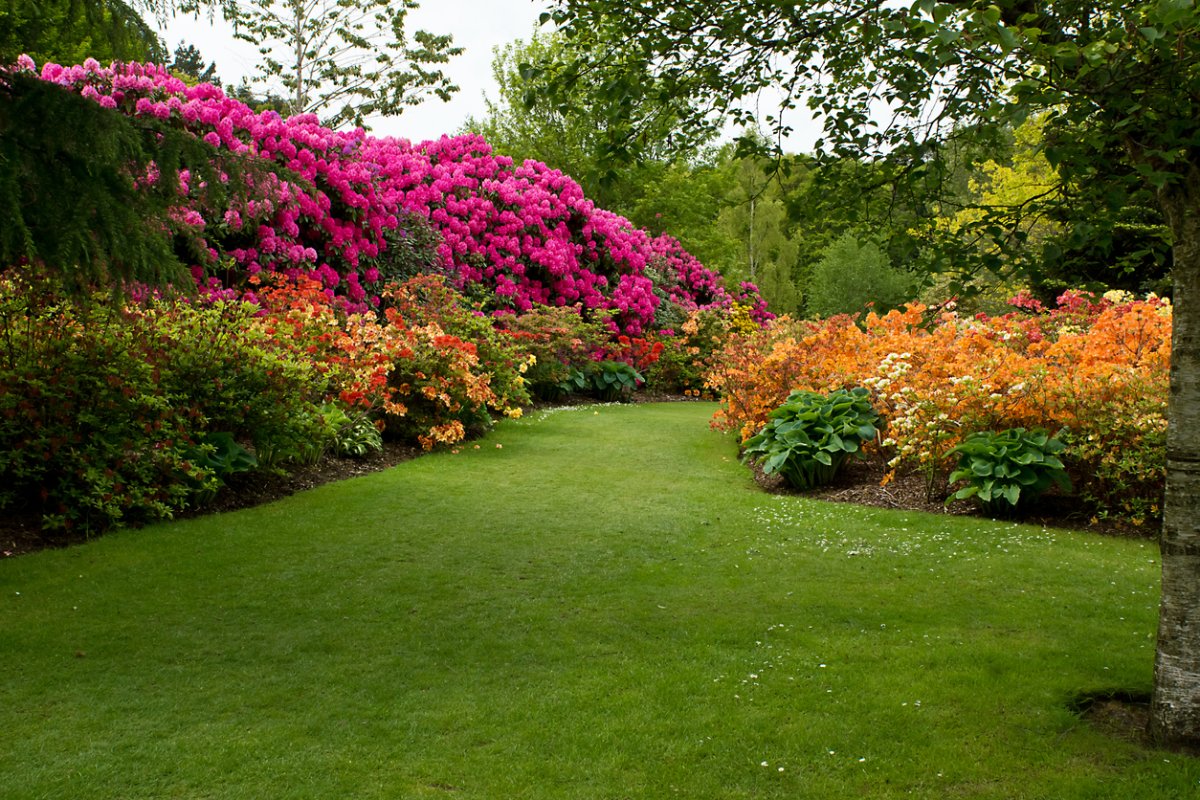

We may earn revenue from the products available on this page and participate in affiliate programs. Learn More ›
One of the rules that most gardeners learn quickly is that it takes sunshine to make flowers. While this is pretty much true for the fruits, veggies, and herbs that many of us started with when we began gardening, there are lots of plants that like morning sun and afternoon shade, or grow and bloom in low light. Just ahead, learn about a dozen of our favorite shade flowers for low-light gardens.
Toad Lily
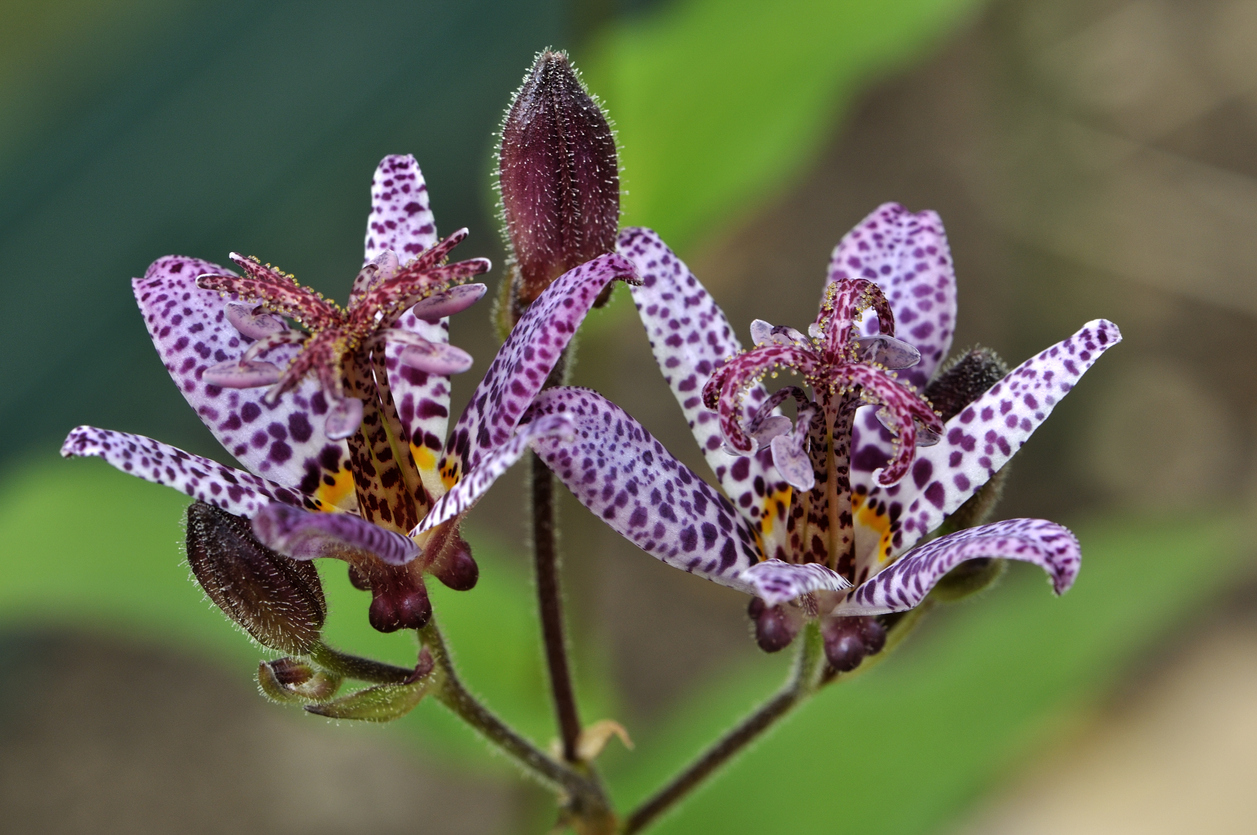
Gardeners love toad lily, Tricyrtis hirta, because of its petite, uniquely patterned flowers. In late summer to early fall, it produces clusters of white or pale lavender lily-like blooms with intricate purple spotting. The plant grows in clumps with upright, arching stems 2 to 3 feet tall. Be sure to plant it where the detailed pattern of the small flowers will be visible up close. Hardy in zones 4 through 8.
Lobelia
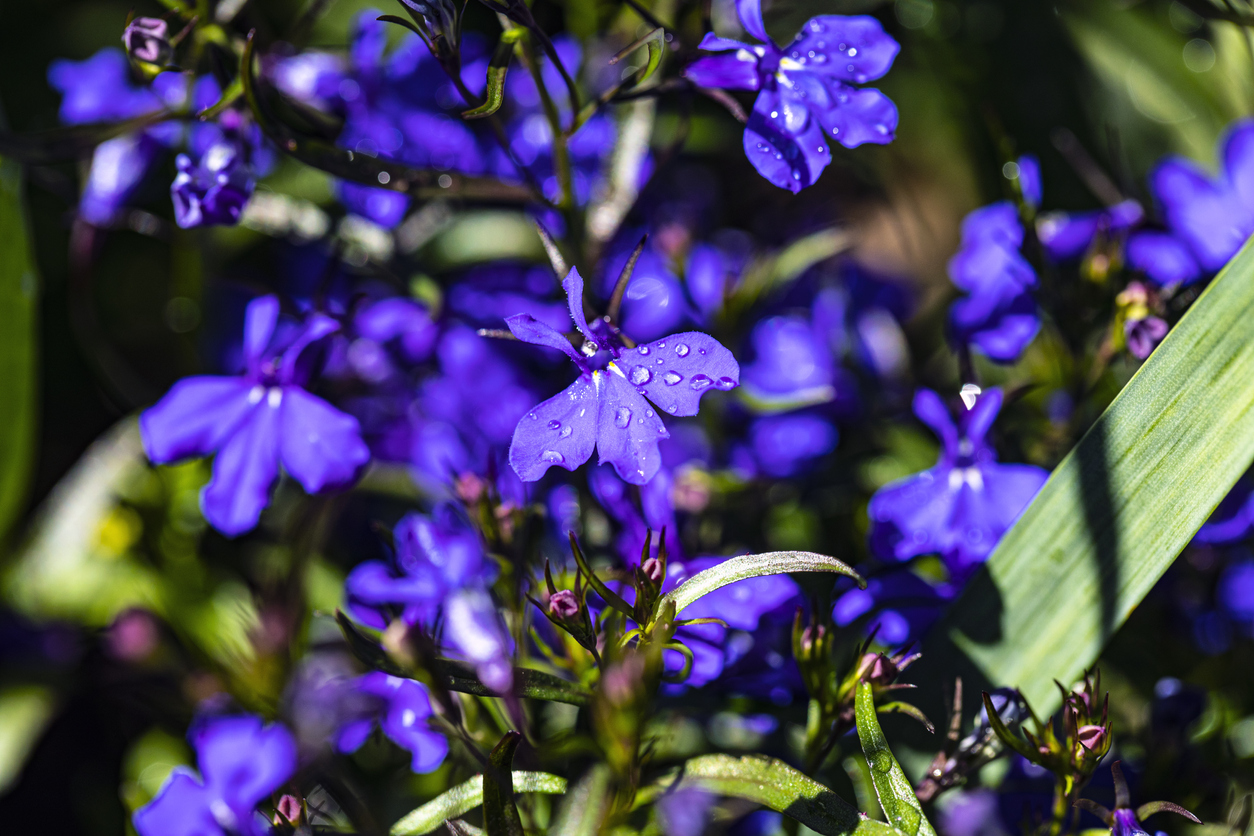
If you’re looking for shade-loving flowers that will attract butterflies to your garden, look no further than Lobelia erinus, also known as border lobelia, or simply lobelia. It makes a profusion of intensely colored flowers throughout the growing season in cool climates. This tender perennial is hardy in zones 10 to 11, but temperate gardeners will find upright and spreading cultivars, in a variety of colors, in the annuals section at their garden center.
Bellflowers
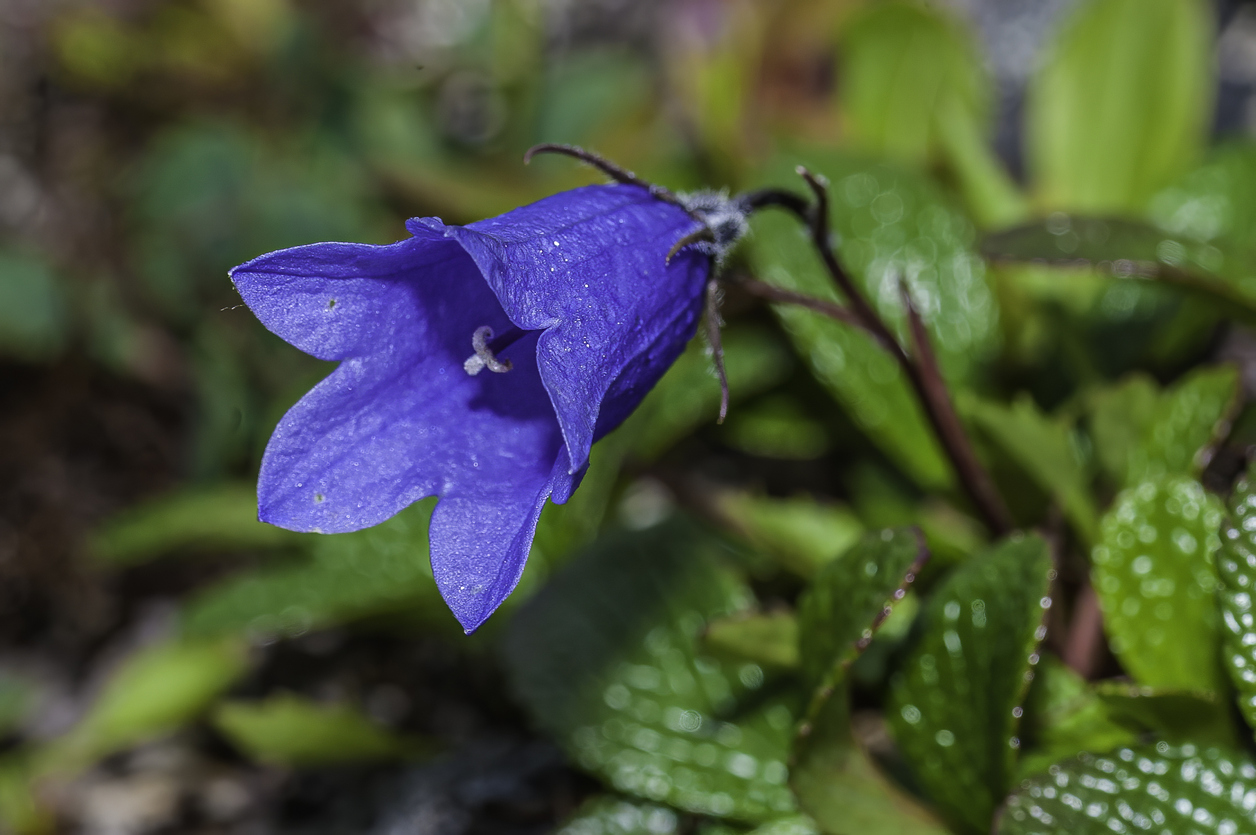
Campanula spp., collectively known as bellflowers, are shade-tolerant flowers recognized by their blue, pink, purple, or white bell-shaped flowers. The numerous species found online and in garden centers mostly love moist, rich soil and partial shade. Bellflowers make wonderful filler plants because they are adaptable and easy to grow. Perennial in zones 6 through 9.
Woodland Tobacco
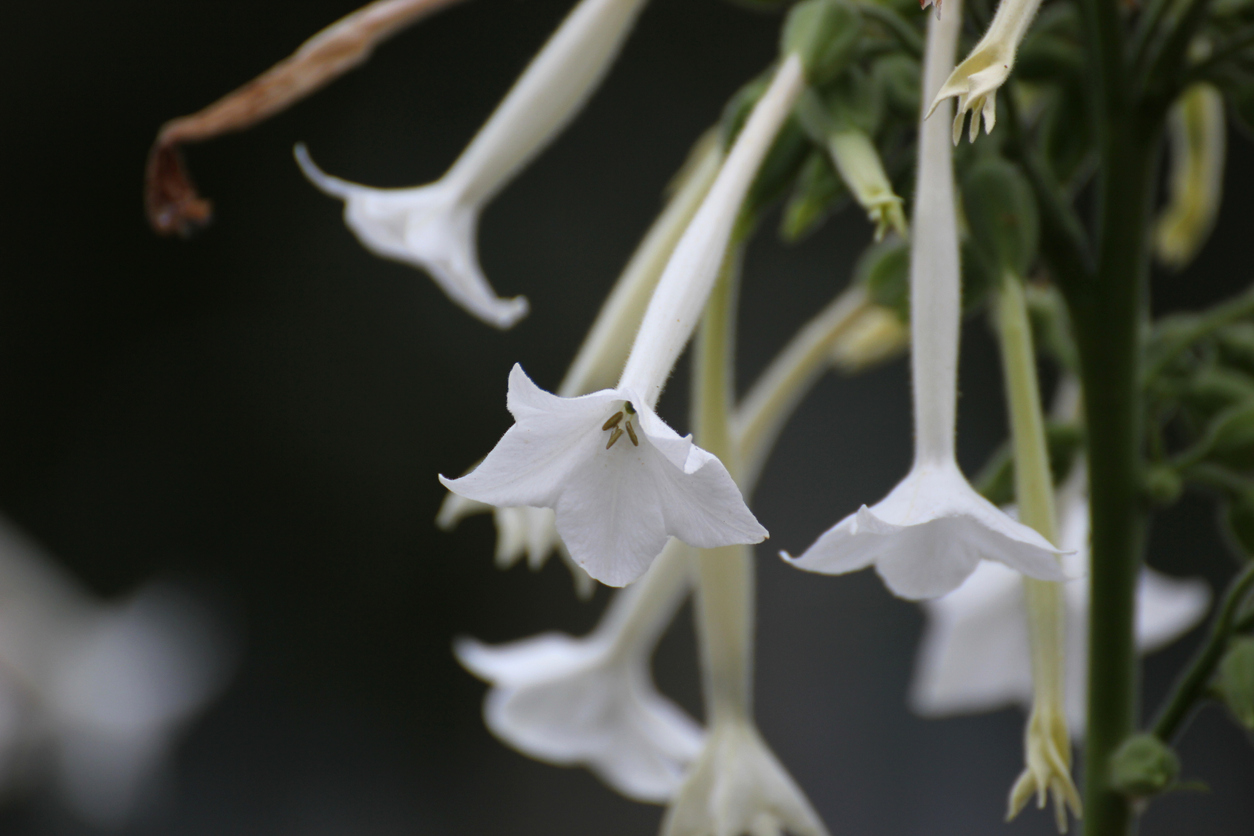
Add fireworks and fragrance to your low-light garden with Nicotiana sylvestris. Because it is nearly impossible to find perennials for shade that bloom all summer, woodland tobacco could be a good alternative. This self-sowing summer annual produces a rosette of large leaves at the base before sending up multiple-branched flower stems to 4.5 feet or higher. Fragrant clusters of elongated tubular flowers explode from buds, each flaring out to a star-shaped opening.
Epimedium
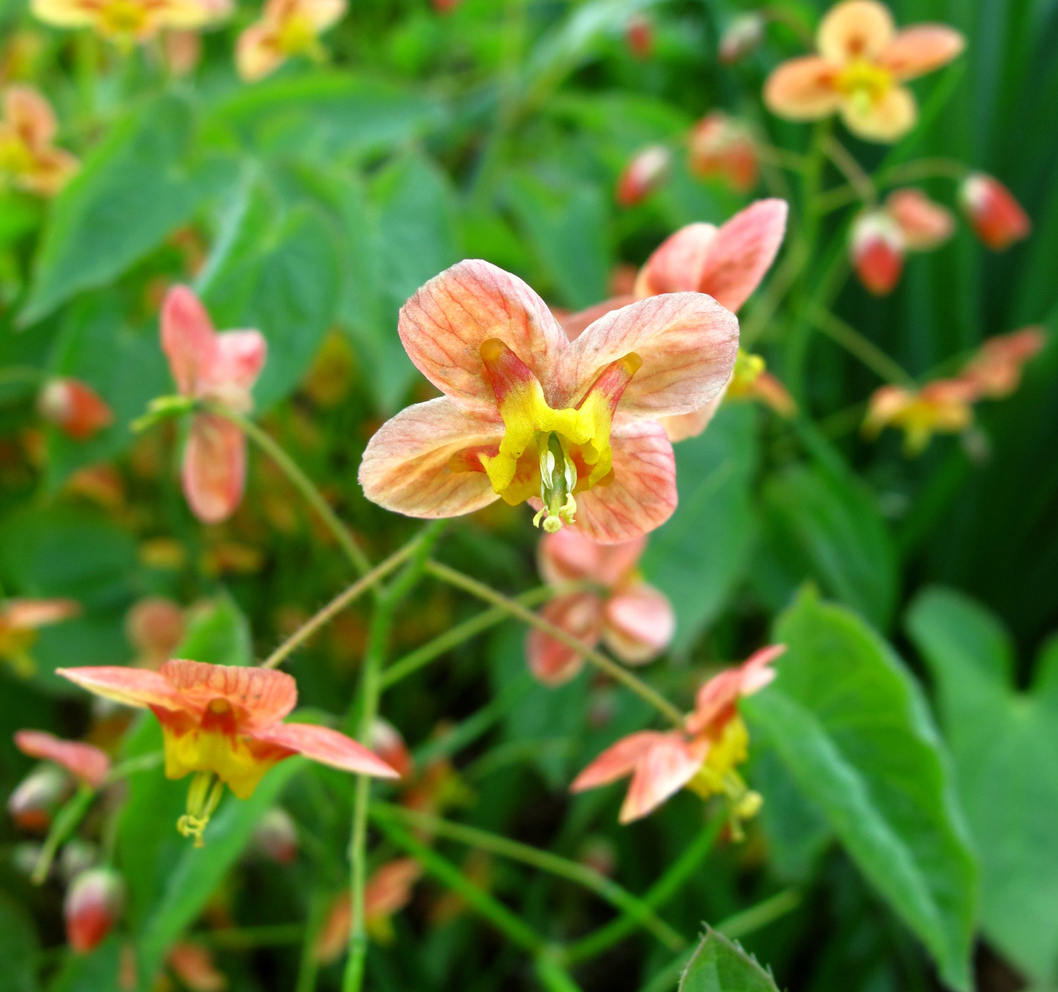
The Epimedium genus includes more than 20 cultivated species. These flowering shade perennials are known by their hanging clusters of four-petaled blooms in shades of beige, lavender, pink, purple, red, white, or yellow. Most species bloom from spring through early summer, and some are evergreen. Epimediums make an excellent choice for dry, rocky shade areas. Hardiness varies by species from zones 3 through 9.
Bleeding Heart
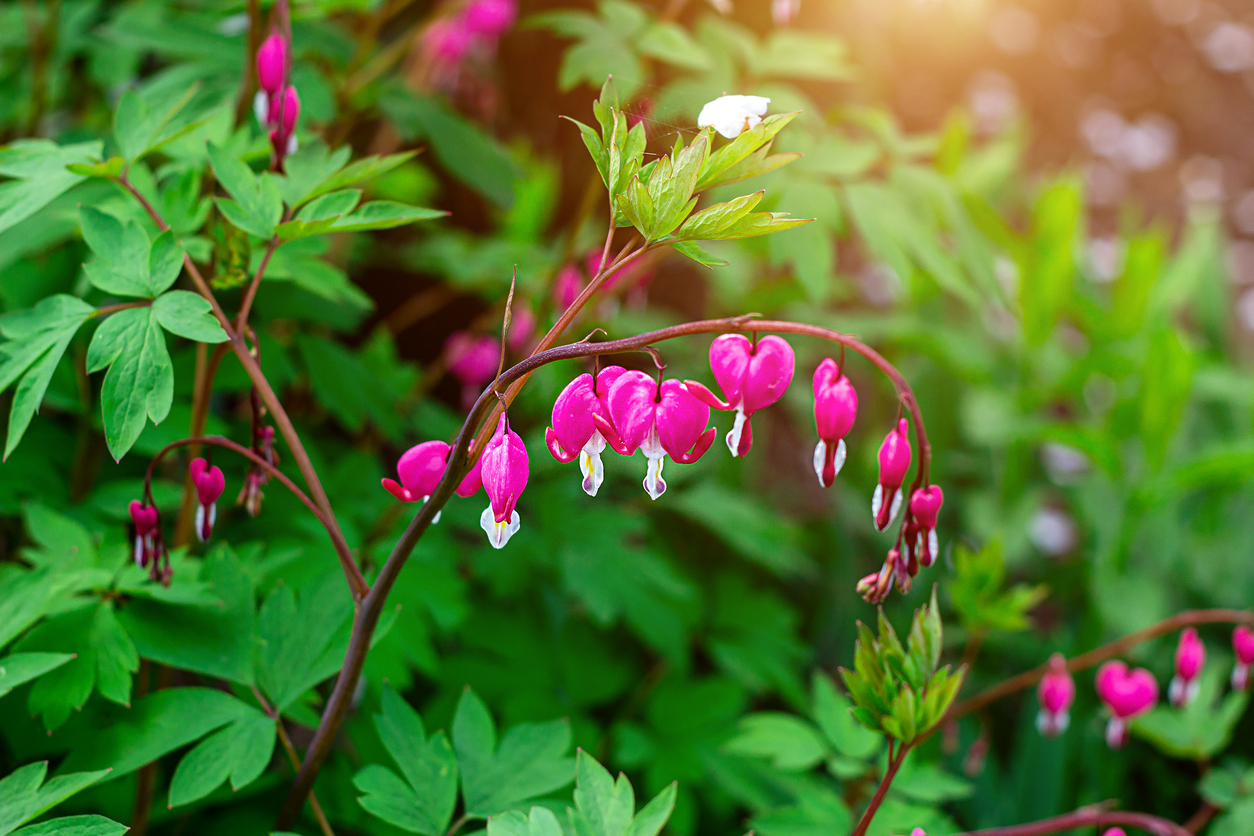
Bleeding hearts include several perennial species. Our native Dicentra eximia, or fringed bleeding heart, is one of the best for American gardens. It features ferny gray-green foliage and reddish-pink heart-shaped flowers. In the wild, it grows on forest floors and rocky ledges of the Appalachian Mountains. This species grows to about 1.5 feet, and flowers from late spring through early summer. Hardy in zones 3 through 9.
Trillium
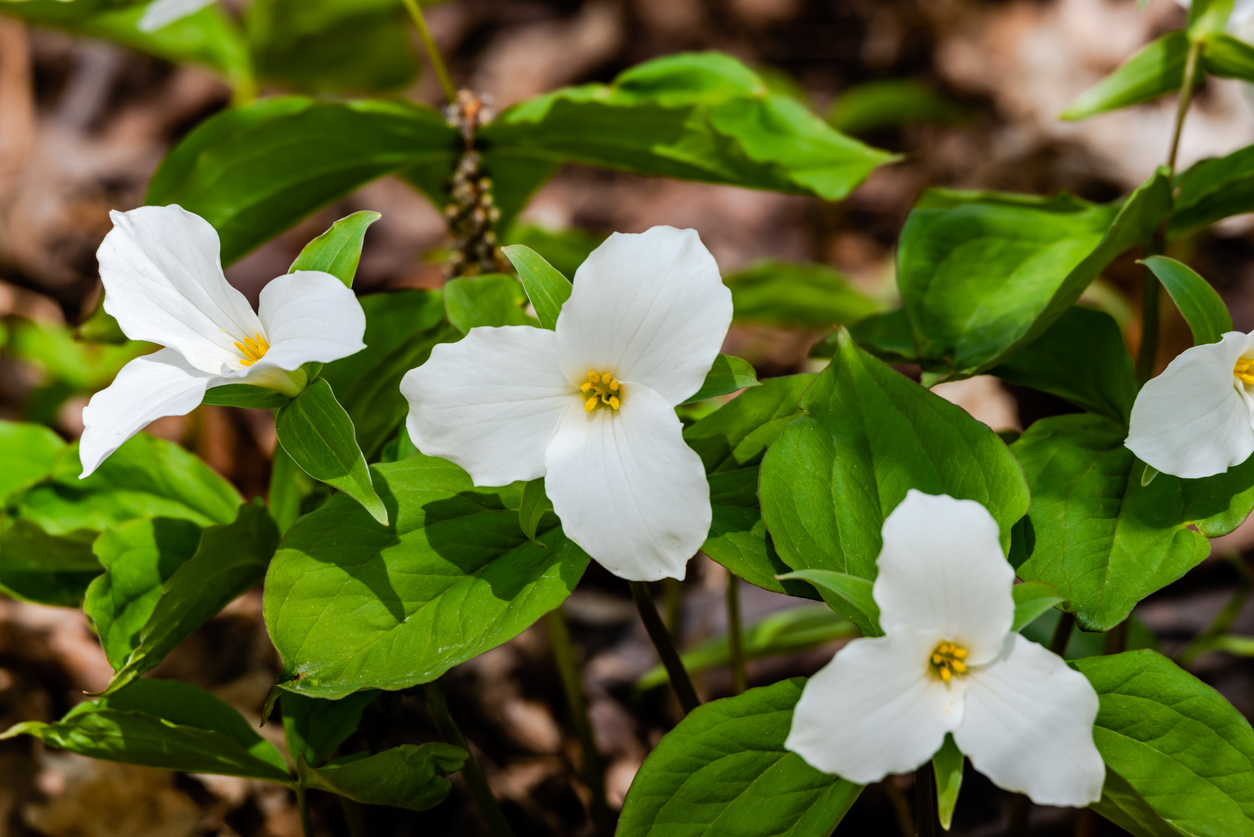
Of the world’s 43 Trillium species, 38 are native to North America. If you don’t have at least one type in your shade garden, you might want to take a closer look. The flowers vary from showy to obscure, in many shades of white, pink, and red. Some are excellent for mass flower displays, while others make fun garden “Easter eggs” that you need to really look for. These spring ephemerals generally pop up in early to mid spring, flower, and disappear into a dormant state by mid summer. Hardiness varies by species in zones 4 through 9.
RELATED: The Best Shade Sails for Your Patio, Deck, or Yard, Tested
Alpine Forget-Me-Not
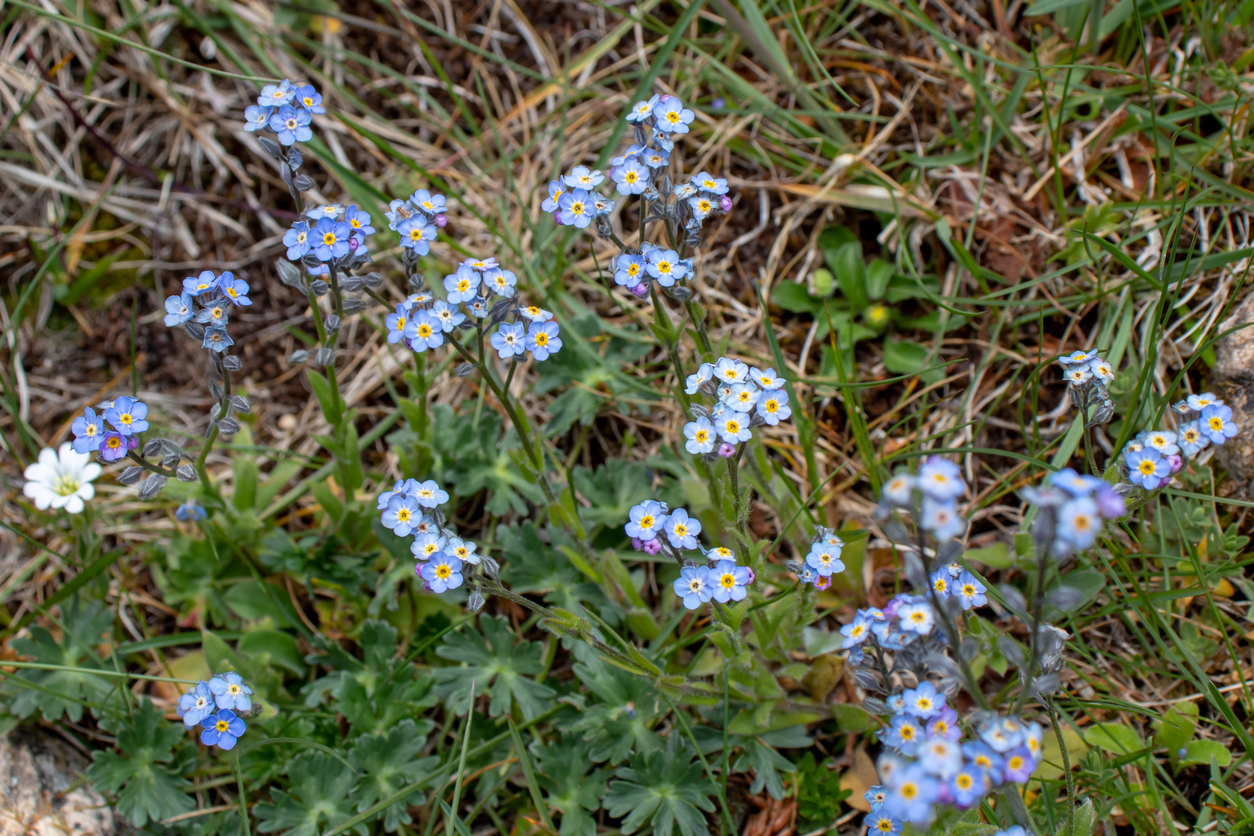
Myosotis alpestris, or alpine forget-me-not, is another beautiful little native plant from the northwestern United States and Canada. In the wild it generally grows in moist wooded slopes and grassy mountain meadows at elevations of 7,500 to 10,000 feet. This low, mounding plant also makes a good choice for rock gardens and woodland gardens in dappled sunlight. In late summer it produces masses of bright blue flowers with yellow centers. Hardy in zones 4 through 8.
Cowslip
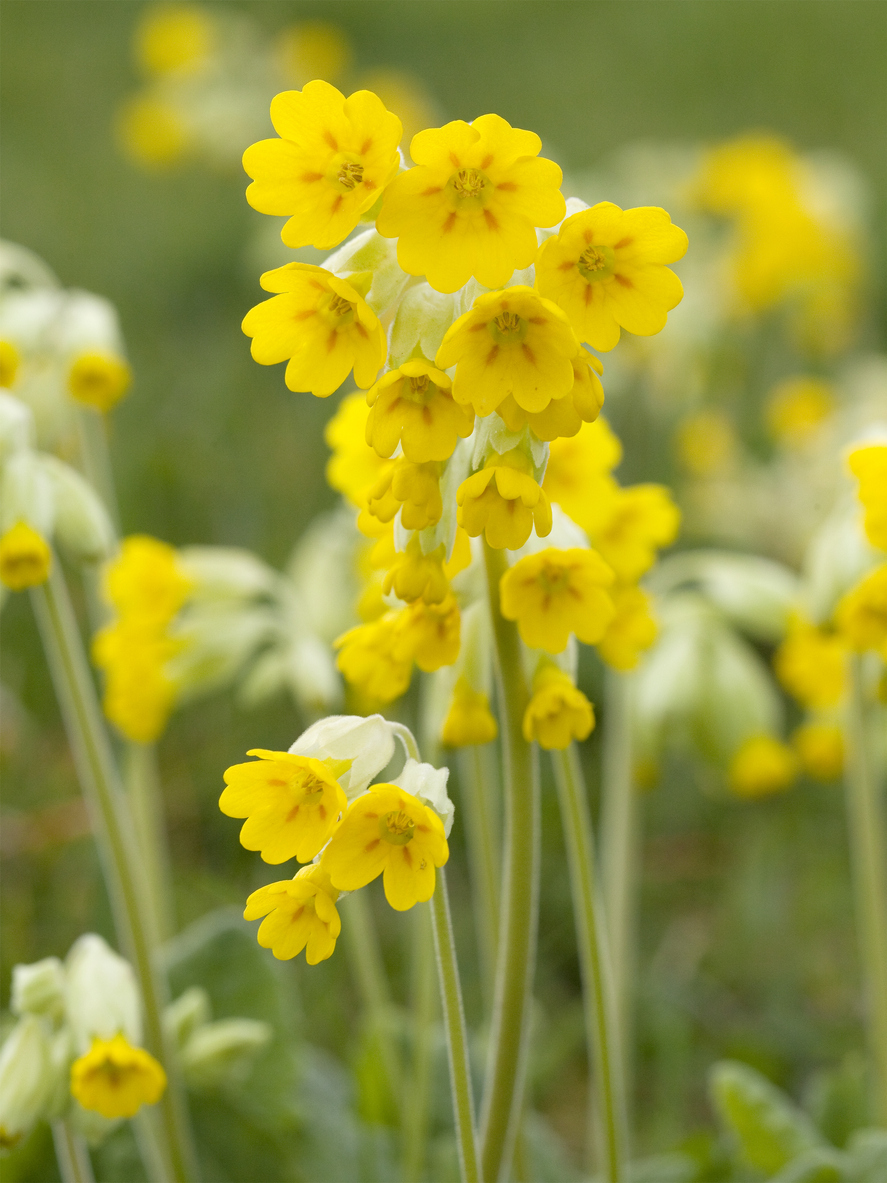
Primula veris, or cowslip, is an old-time perennial that traditionally beautified springtime hedgerows, pastures, and woodlands in Europe with its nodding, lemon yellow blooms. It grows well in dappled sunlight and rich, moist soil, like that found near seep springs and stream banks. Hardy in zones 3 through 8.
Primrose
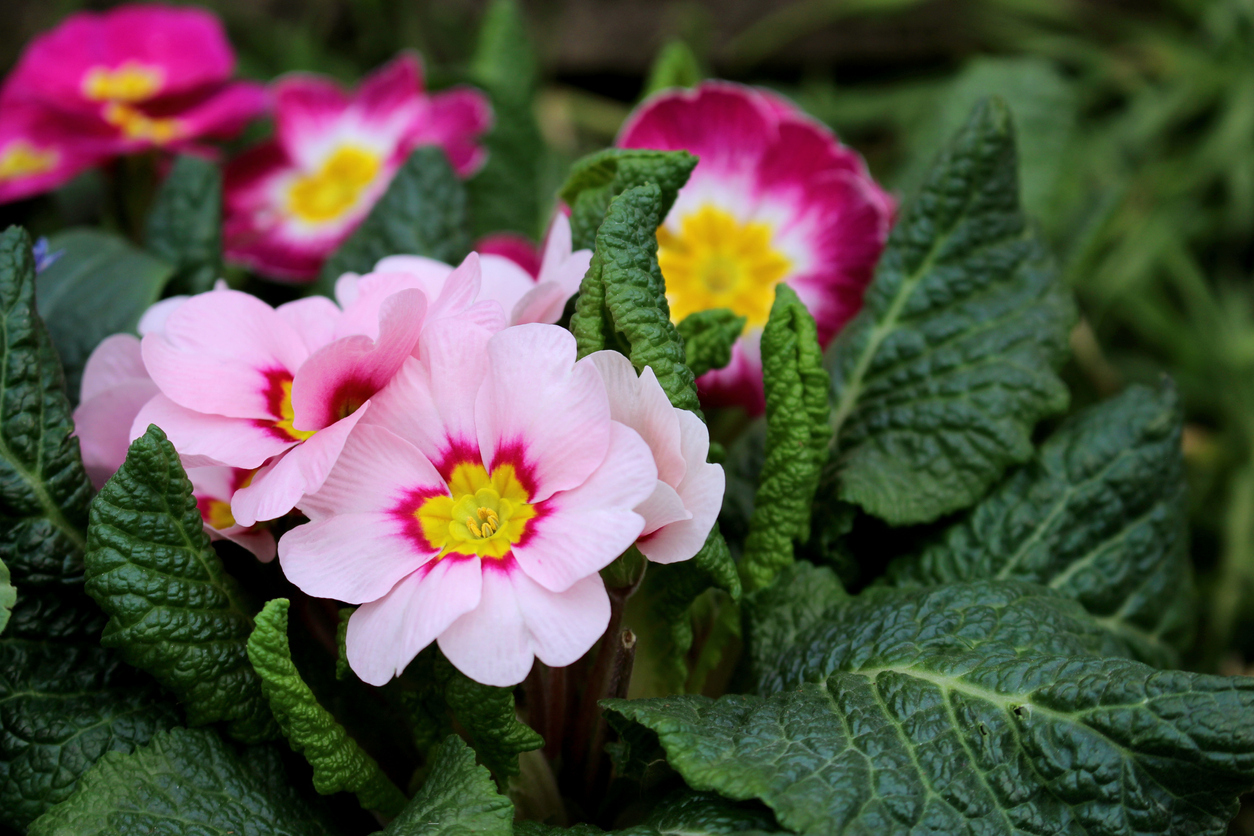
Primula polyantha, better known as primrose, is a small, short-lived perennial that grows well in borders, containers, garden beds, or naturalized lawns, and blooms in early spring. Through hybridization, many spectacular colors are available. In mild areas the flowering season may last well into summer and the plants return each year. But in warmer regions, primroses are mostly used as annual shade flowers. Hardy in zones 5 through 8.
RELATED: 22 Fast-Growing Shade Trees to Plant in Your Yard
Bletilla
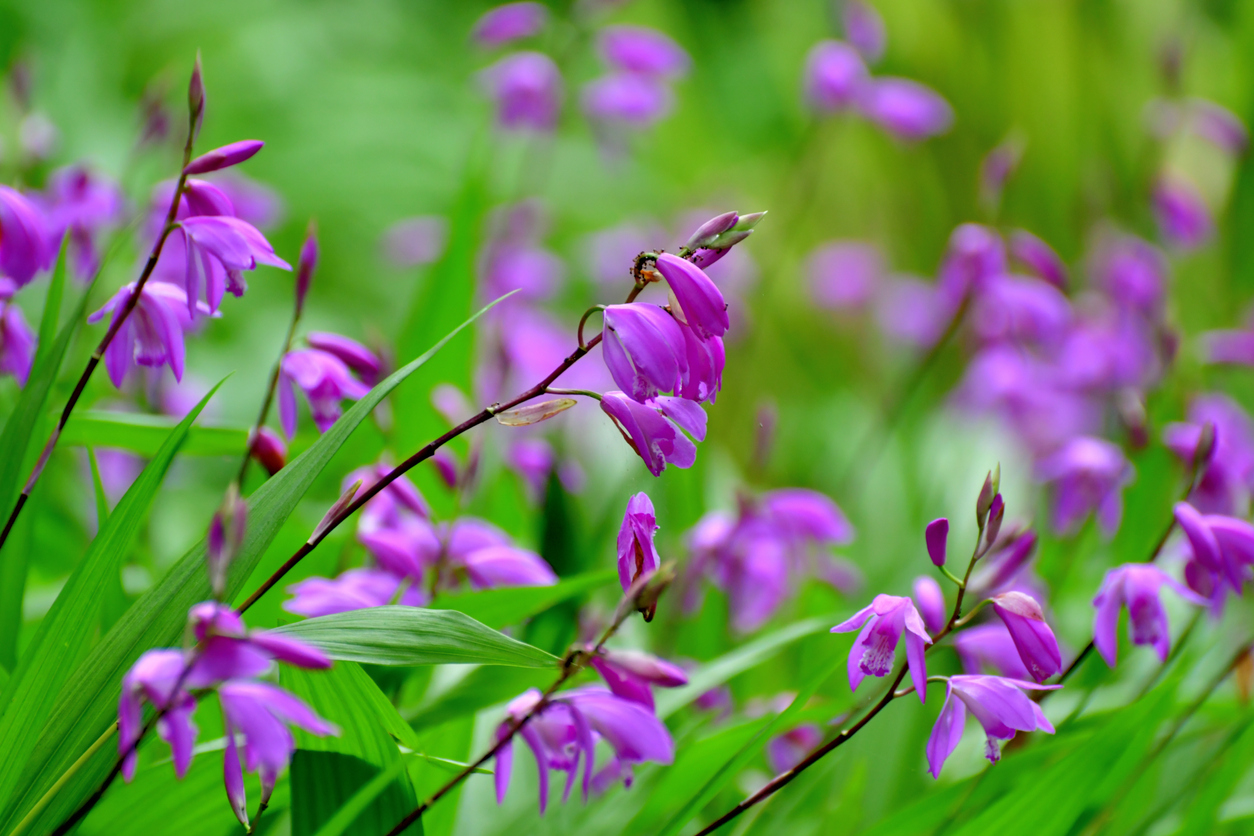
Bletilla striata, also known as Chinese ground orchid, adds an exotic look to the woodland garden. Spreading clumps of pleated, sword-shaped, paper-like foliage give rise to smooth flower stems topped by small pinkish-purple flower clusters from mid to late spring. Hardy in zones 5 through 9.
Rhododendron
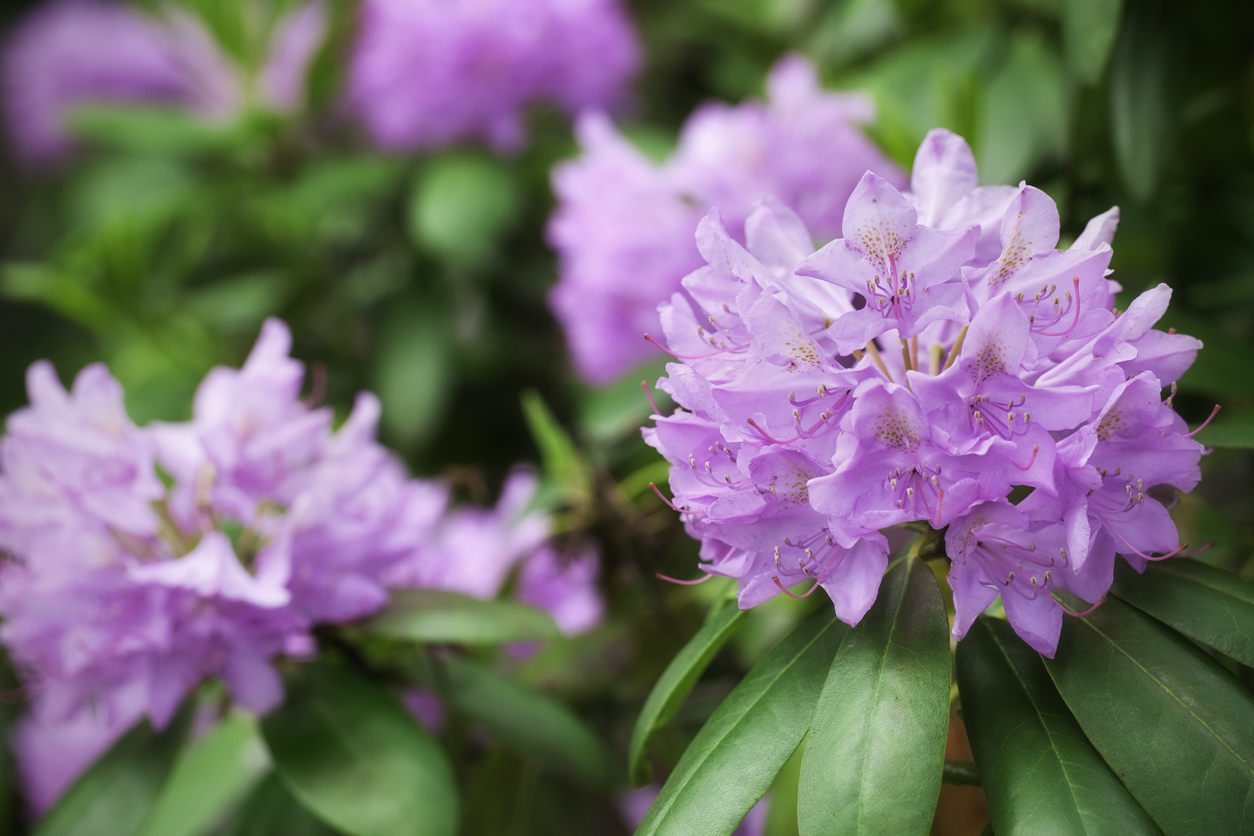
For something a bit more substantial, give rhododendrons a try. Rhodies are some of the biggest flowering plants for shade. These large, broadleaf evergreen shrubs display massive blooms in shades of white, pink, red, or purple from mid to late spring. Rhododendrons require excellent drainage, making them a good choice for shaded rocky slopes.
RELATED: 14 Best Plants for Under Trees
